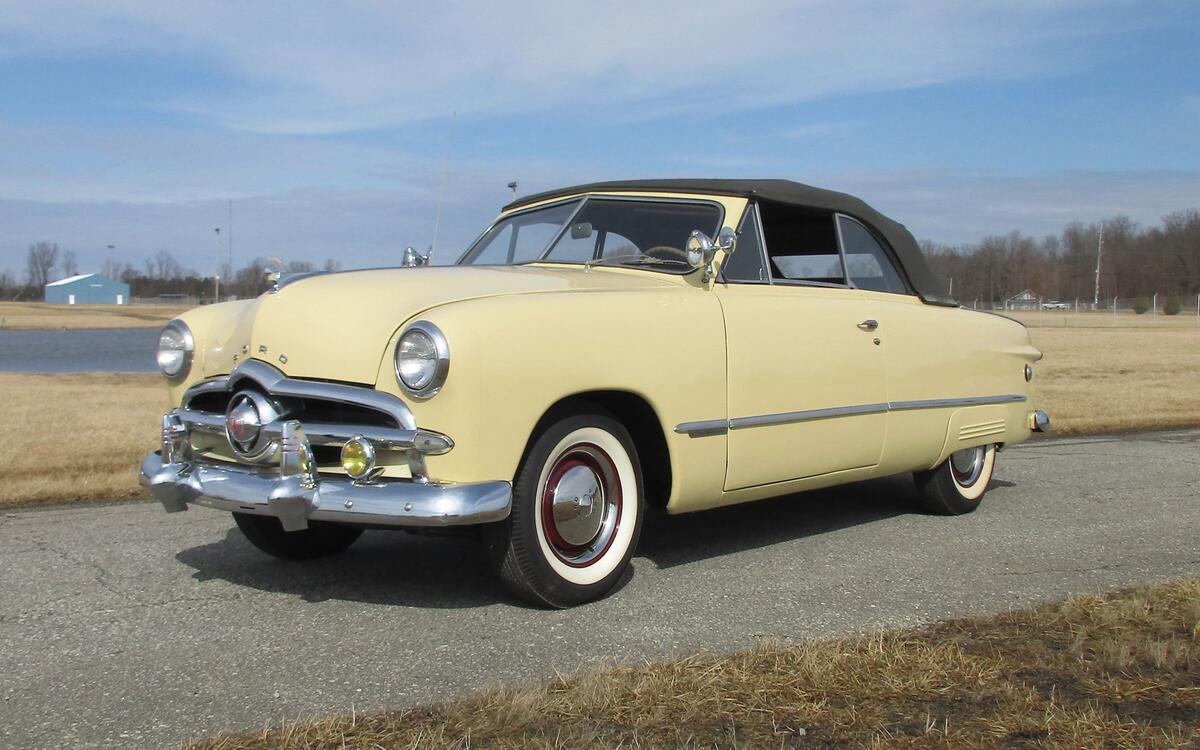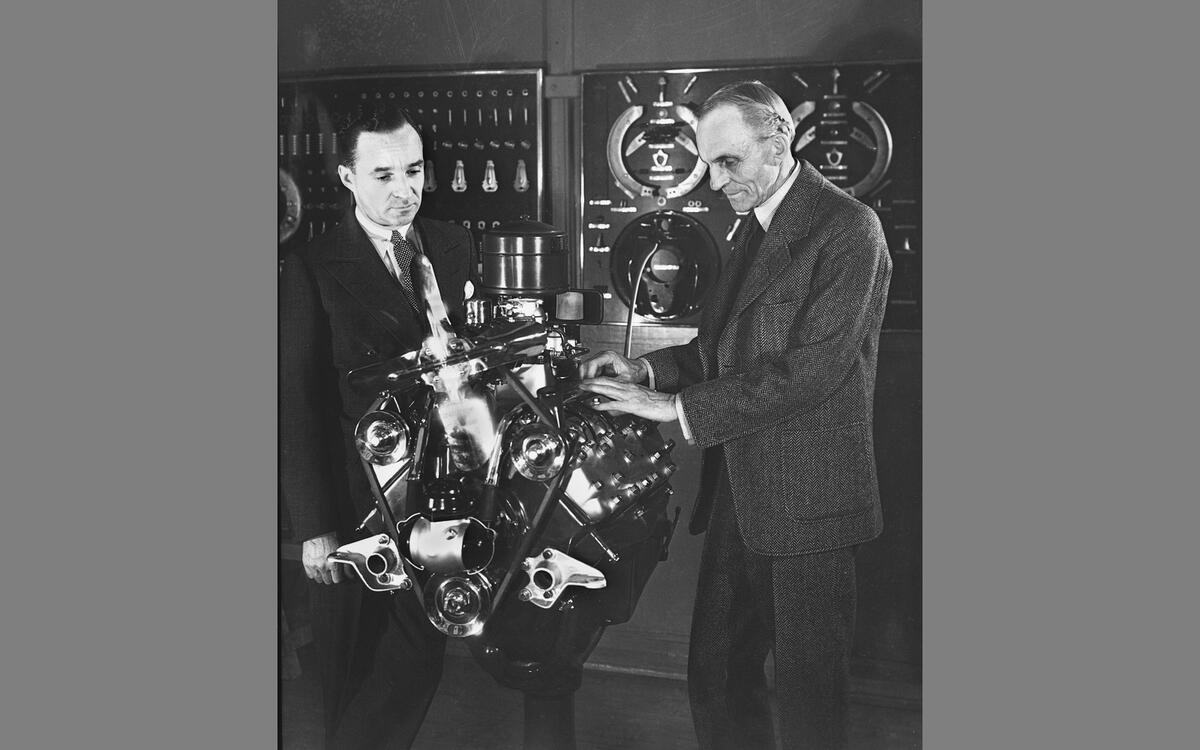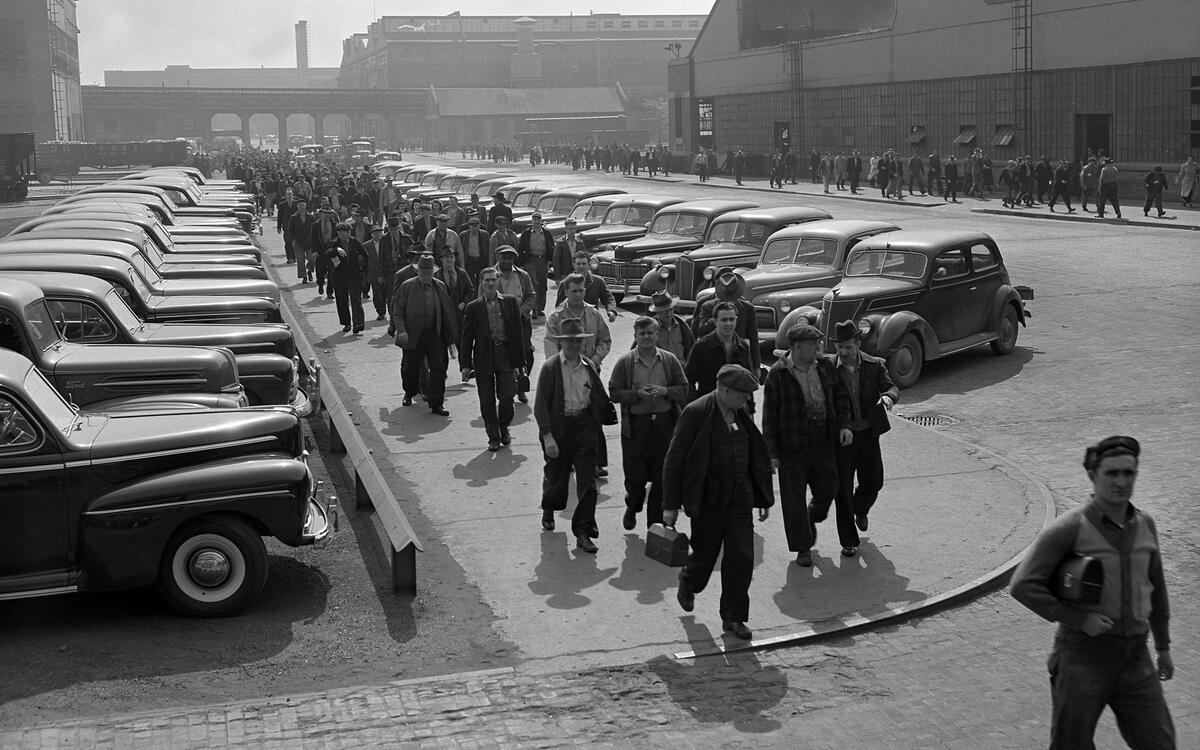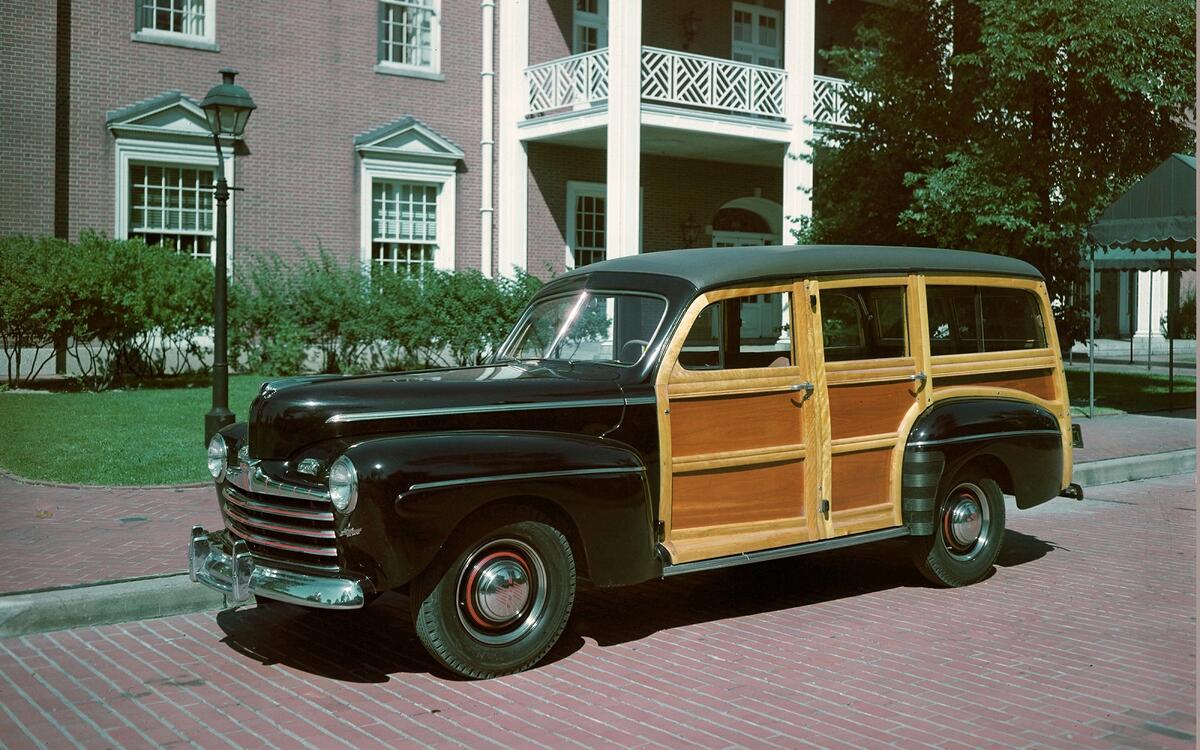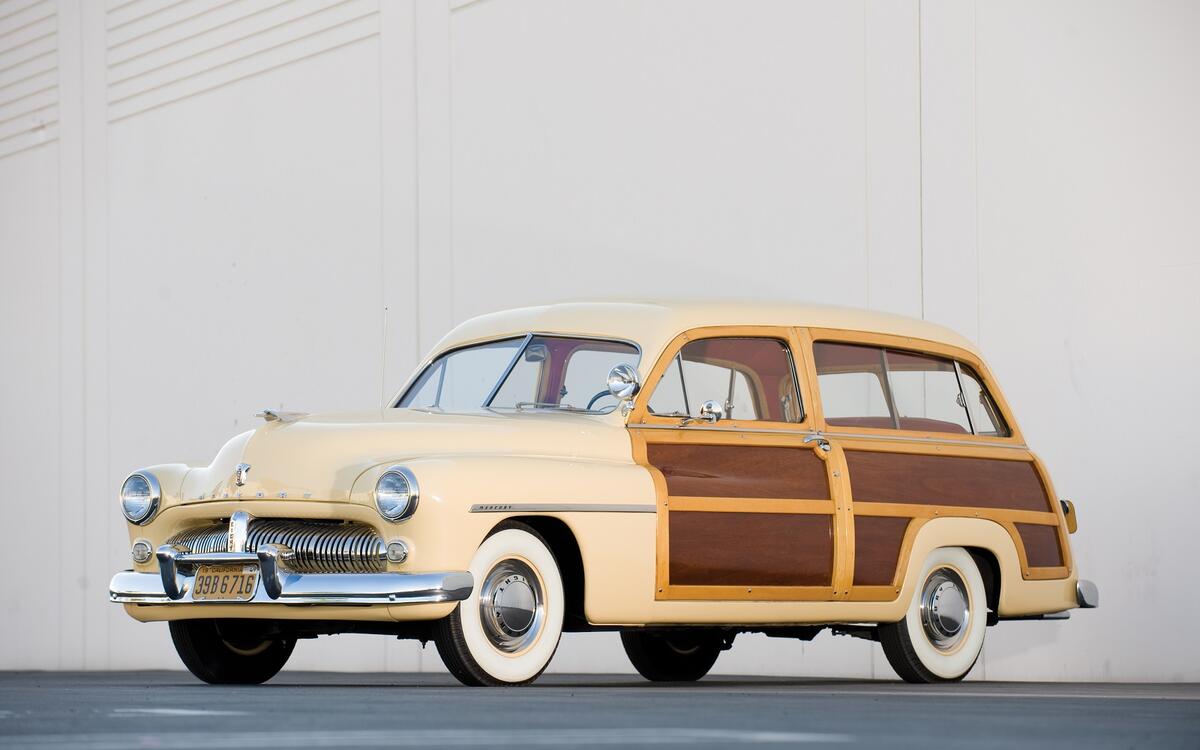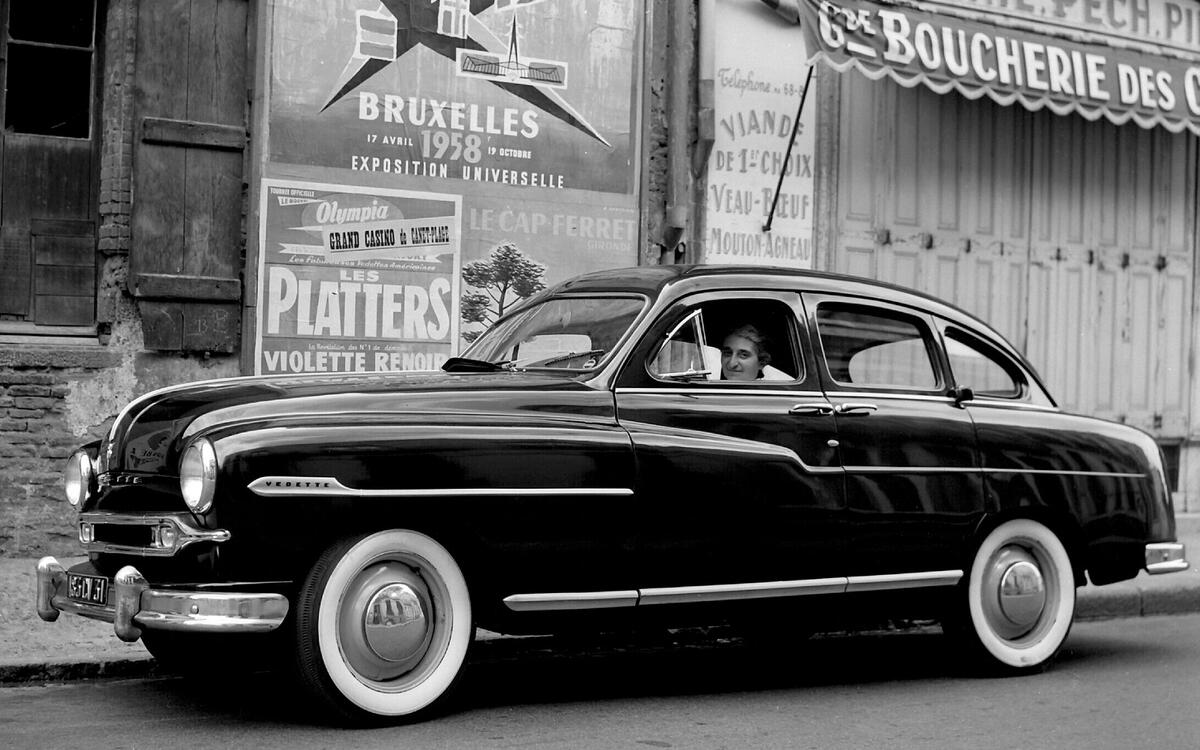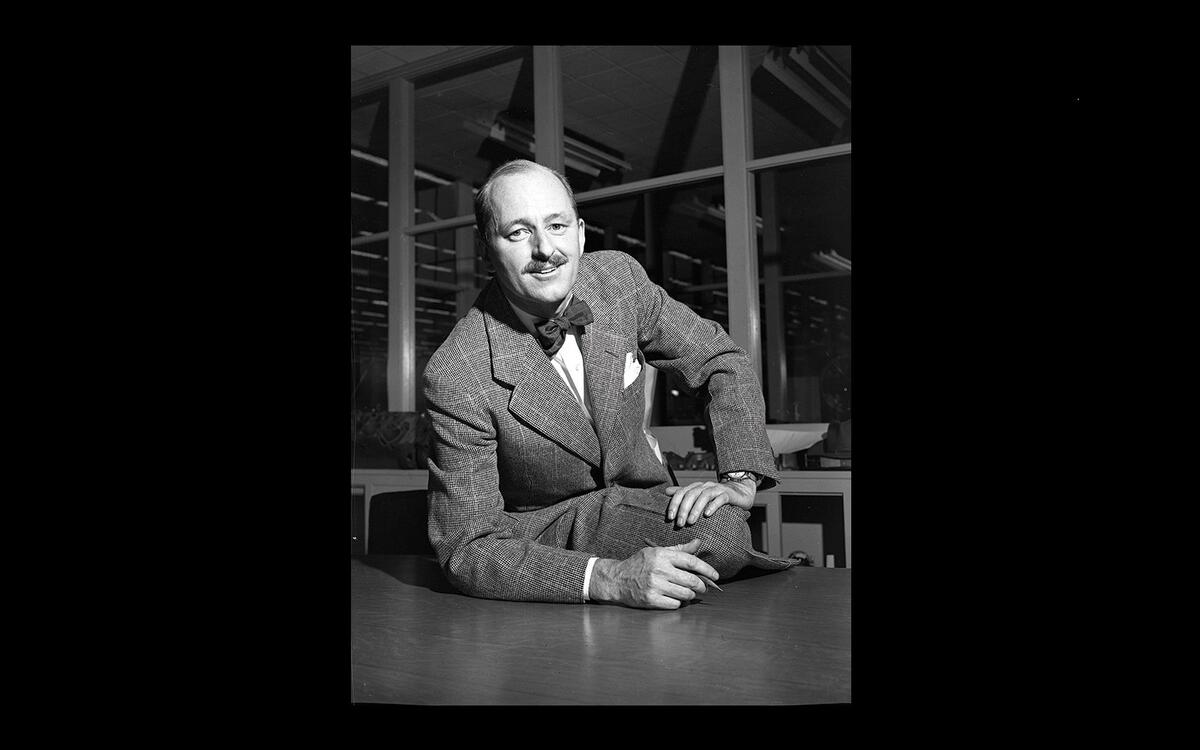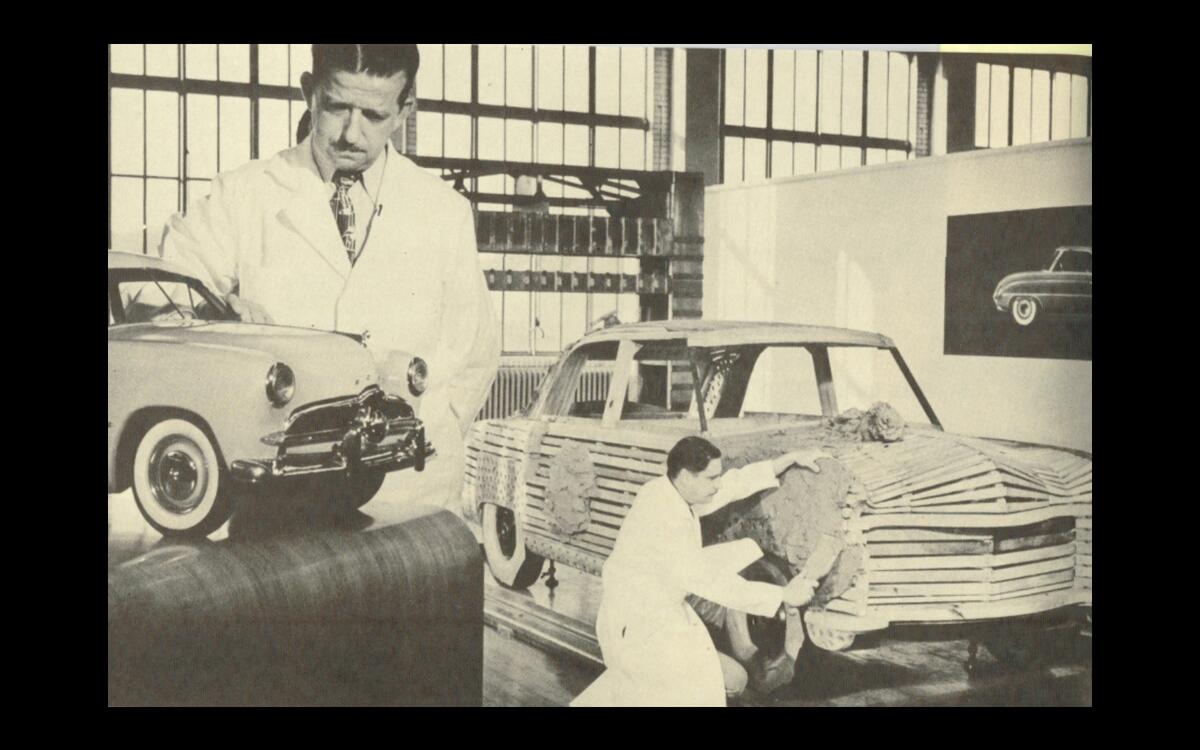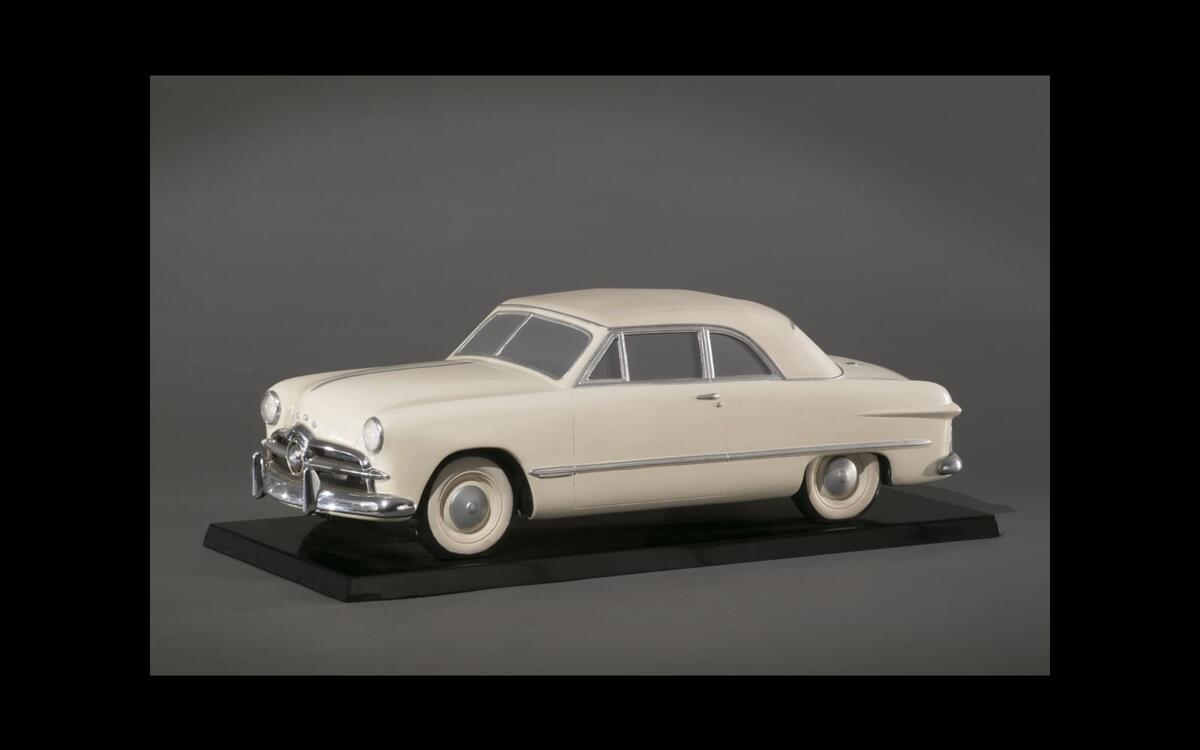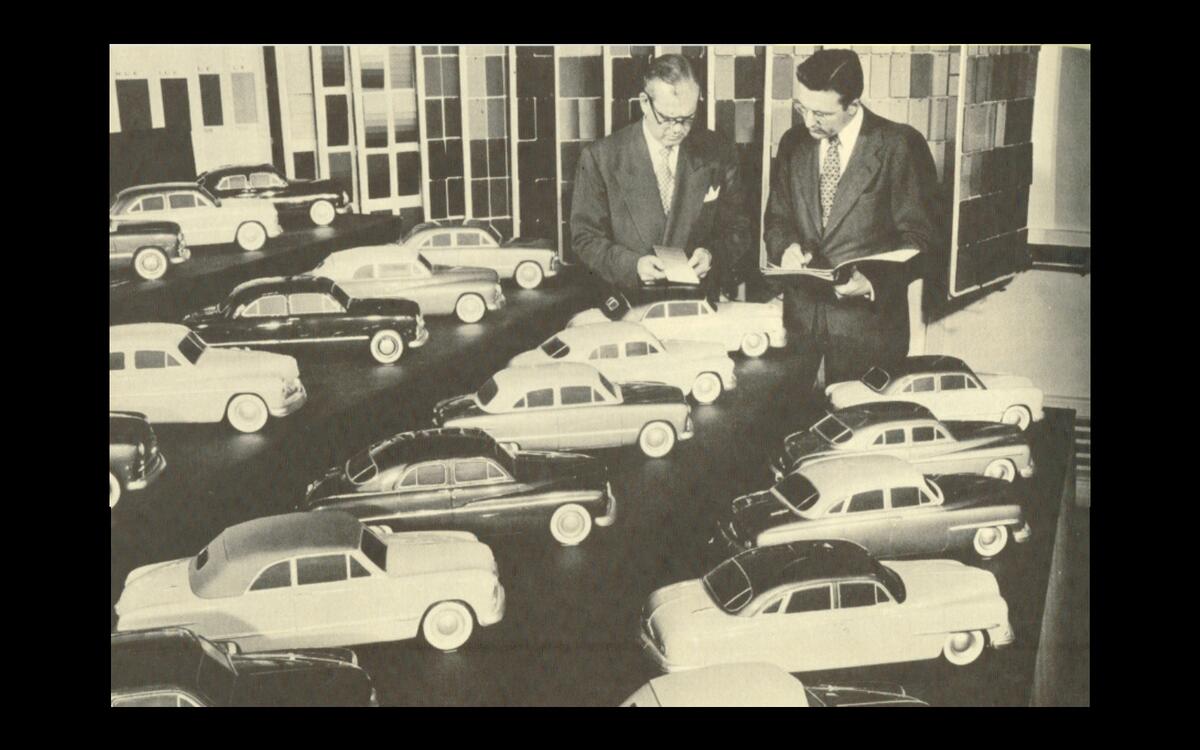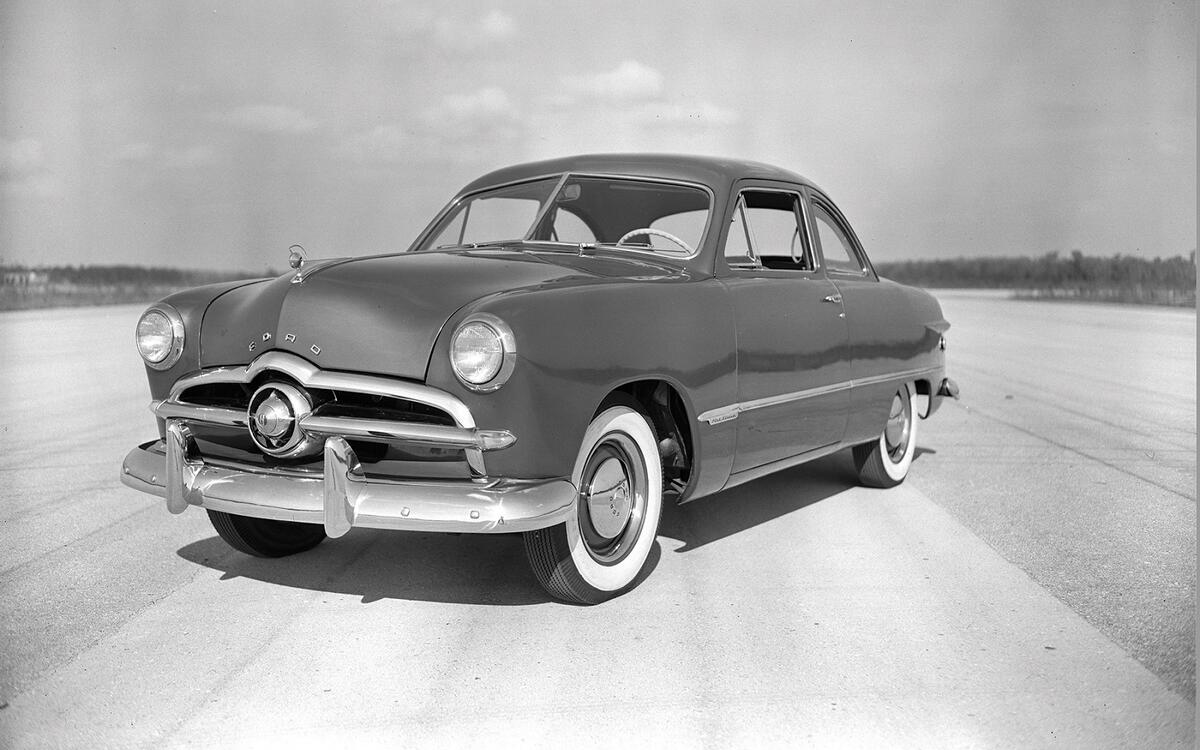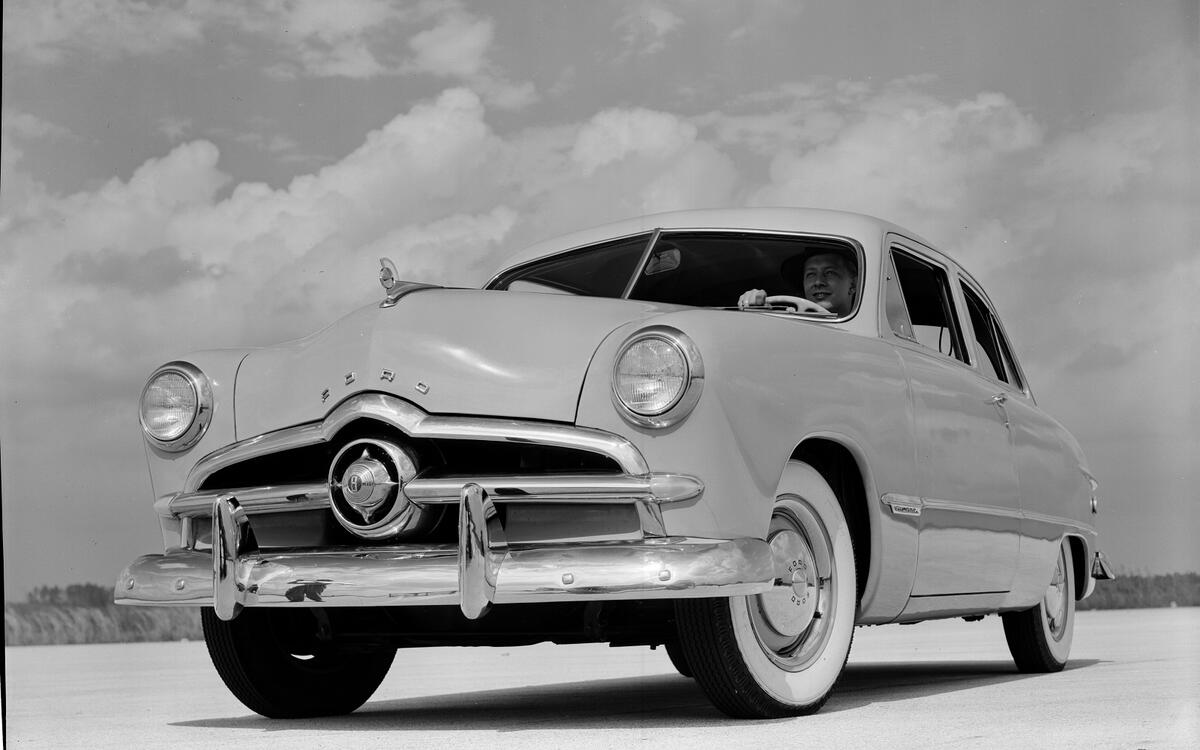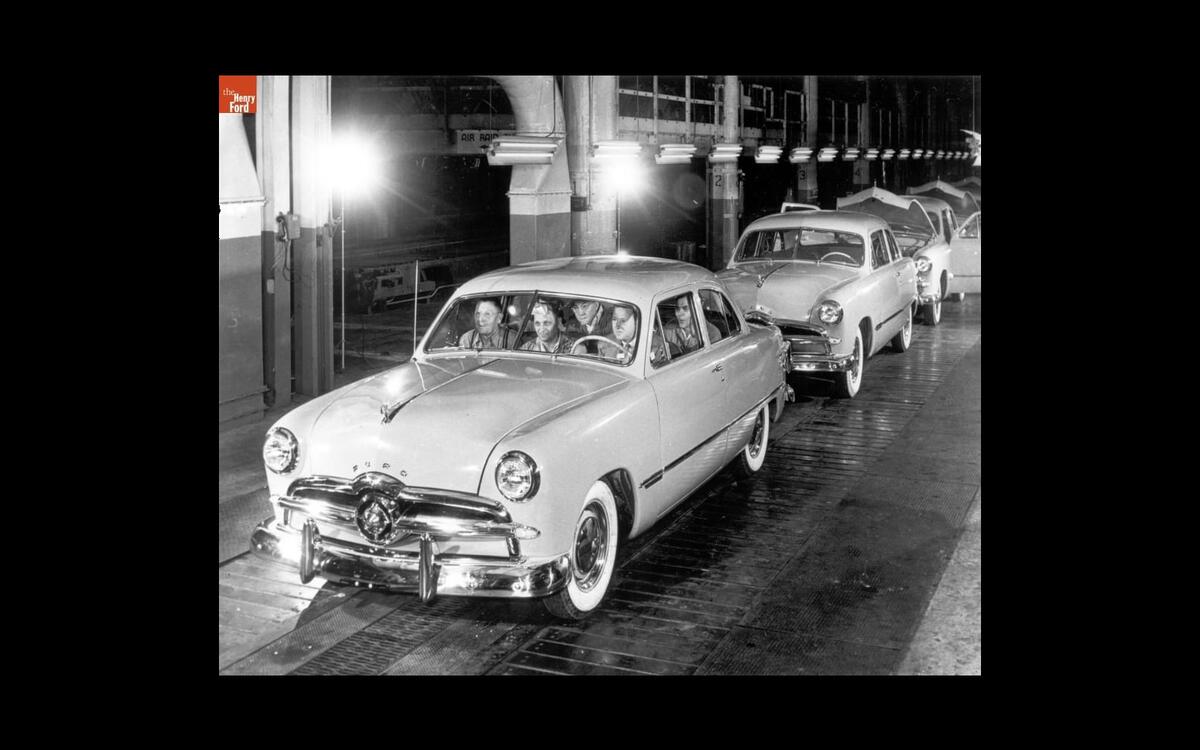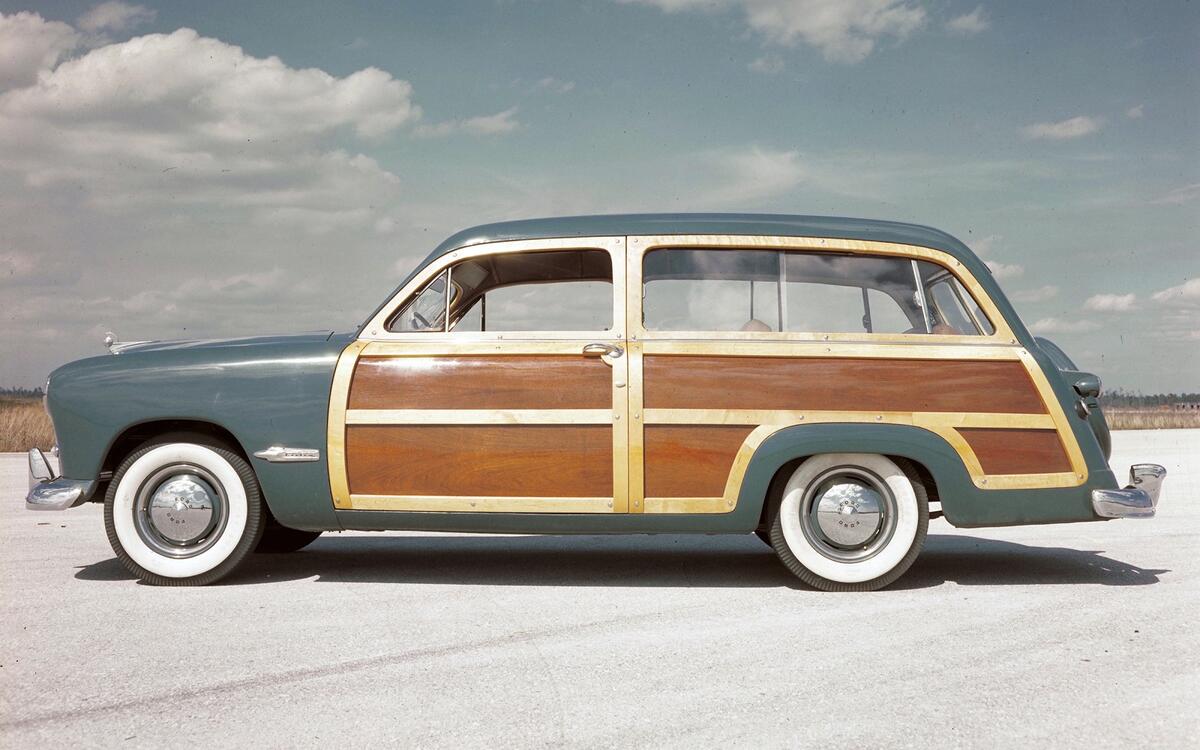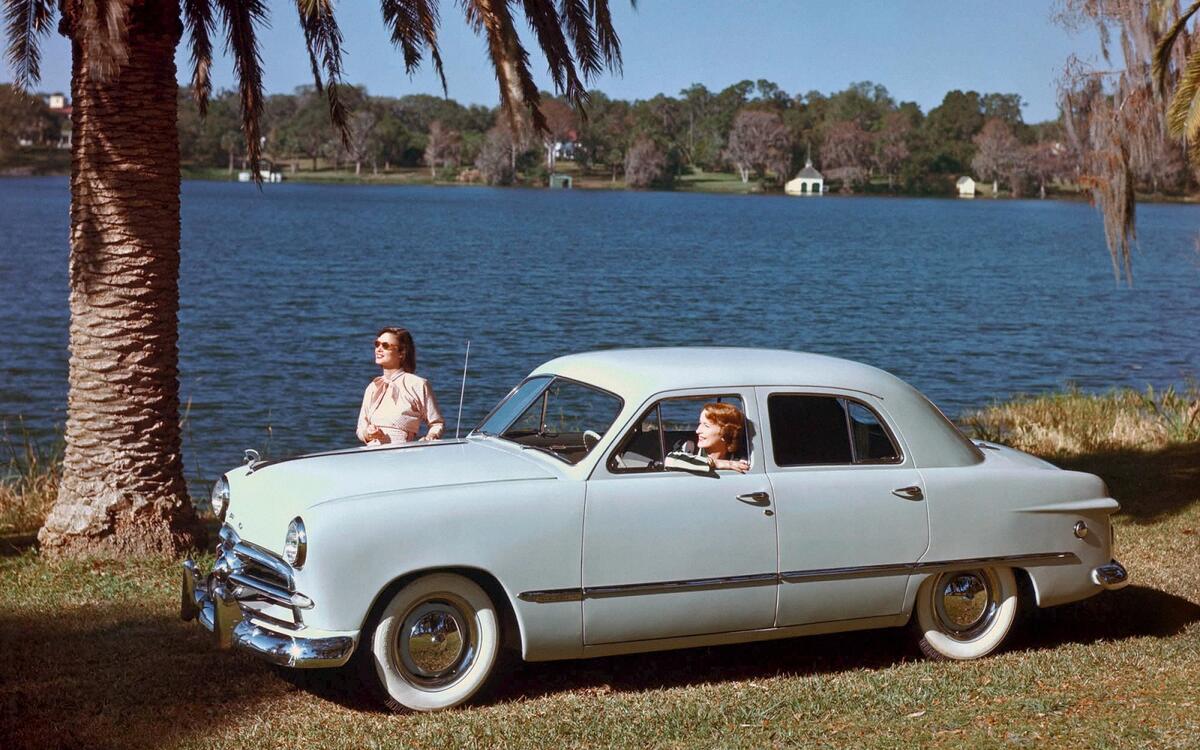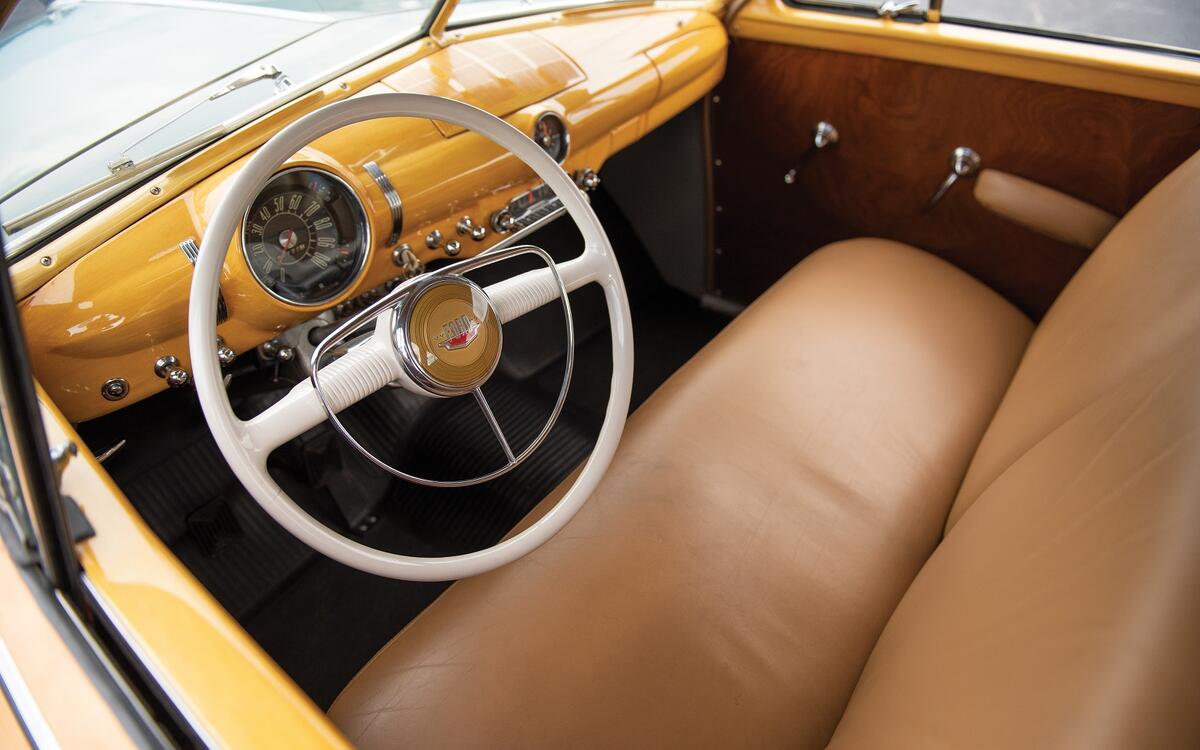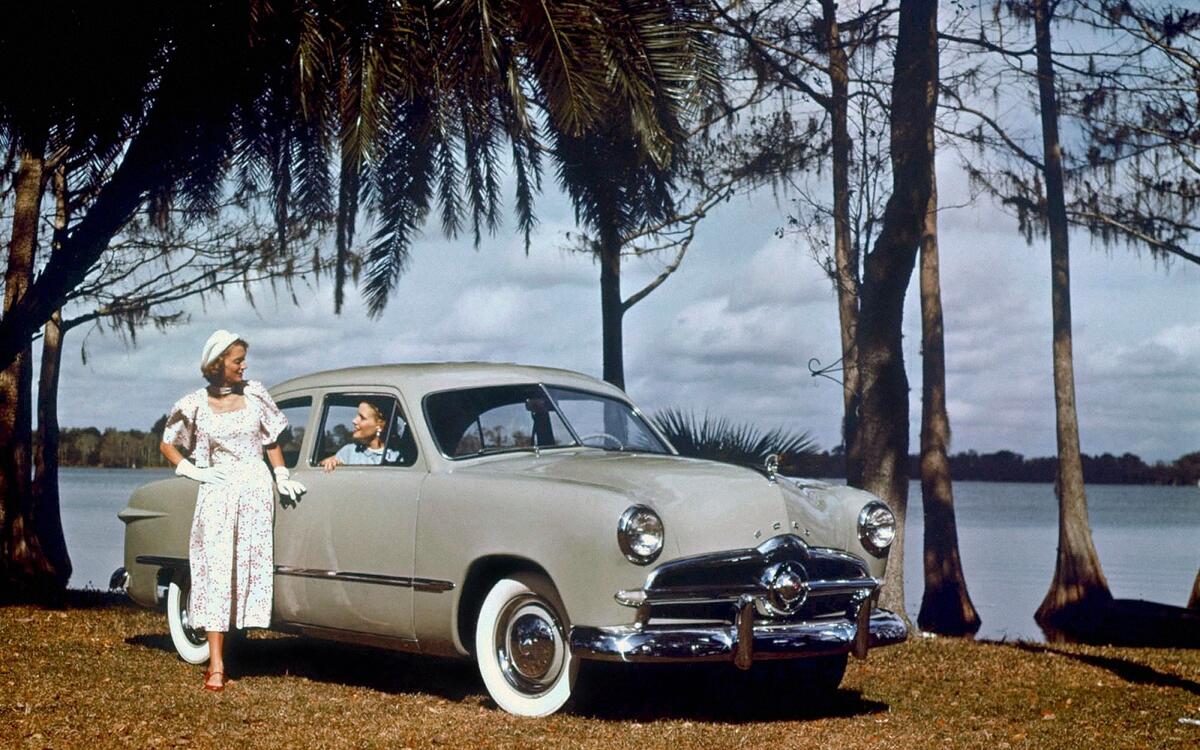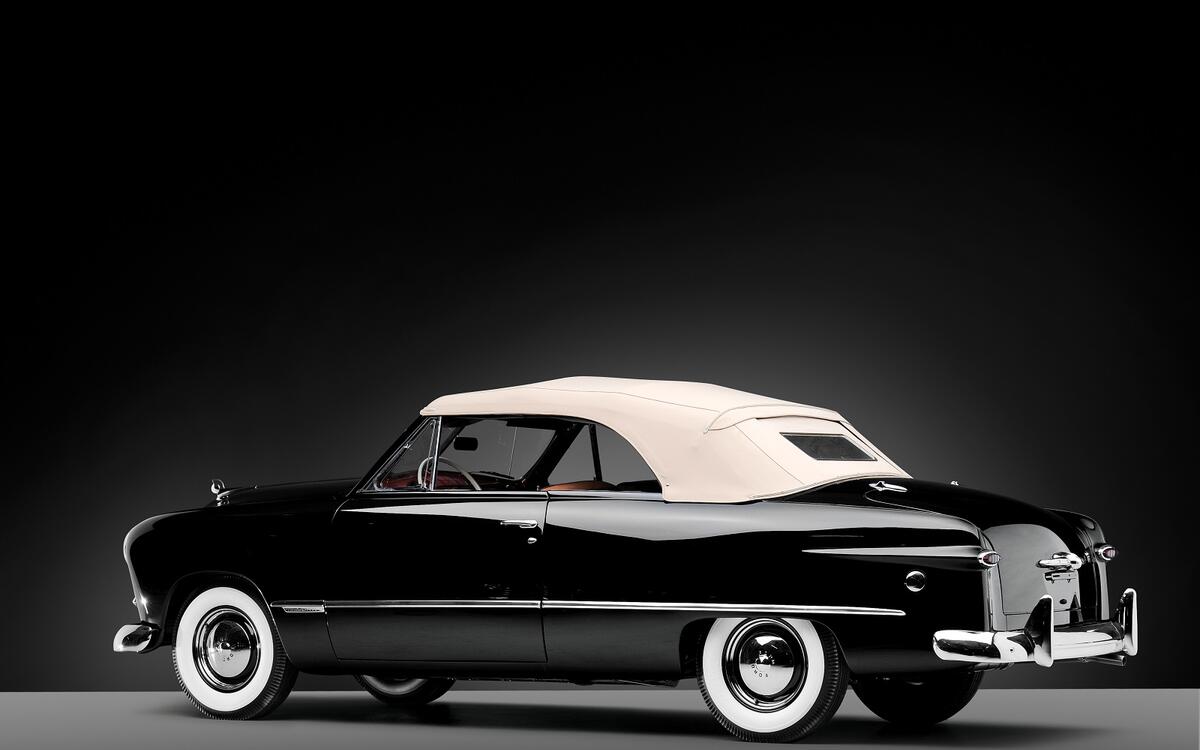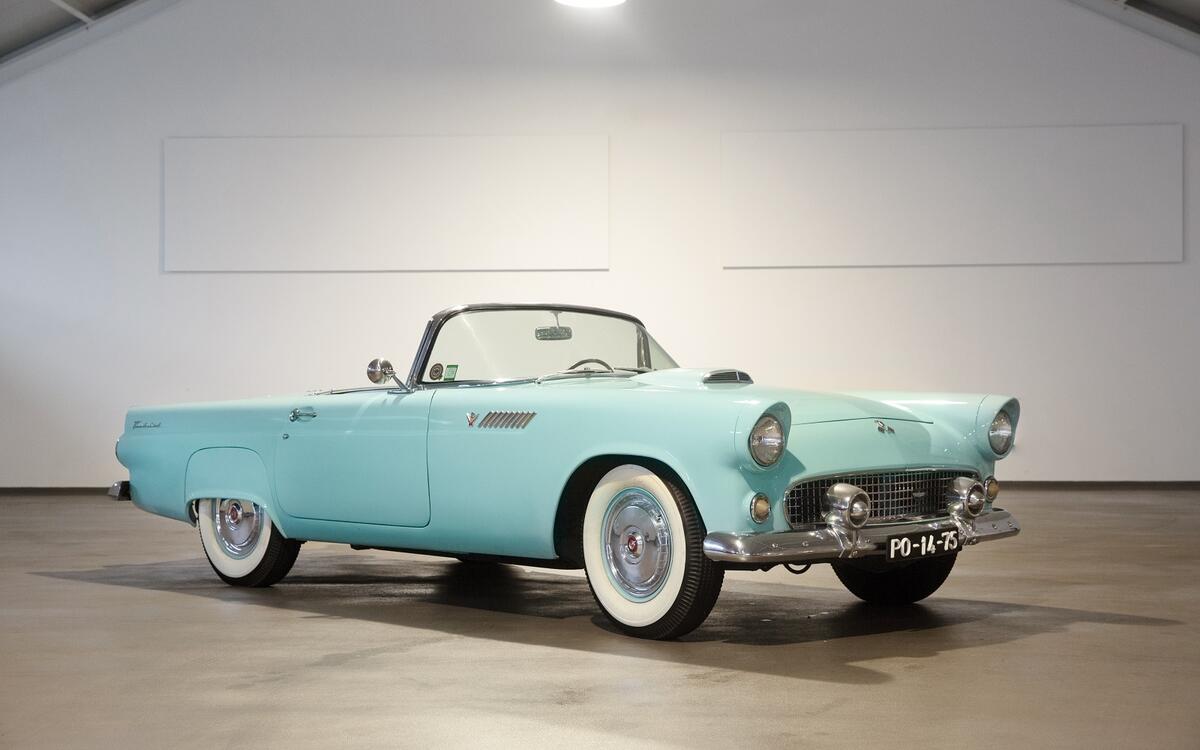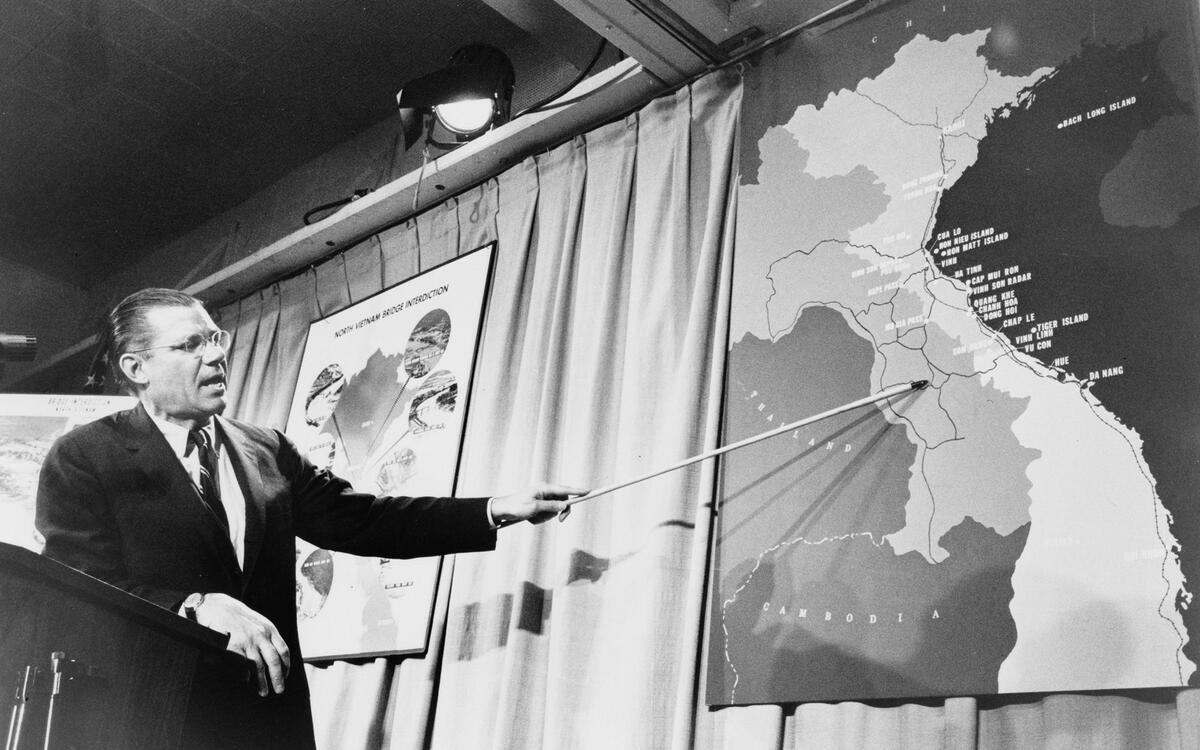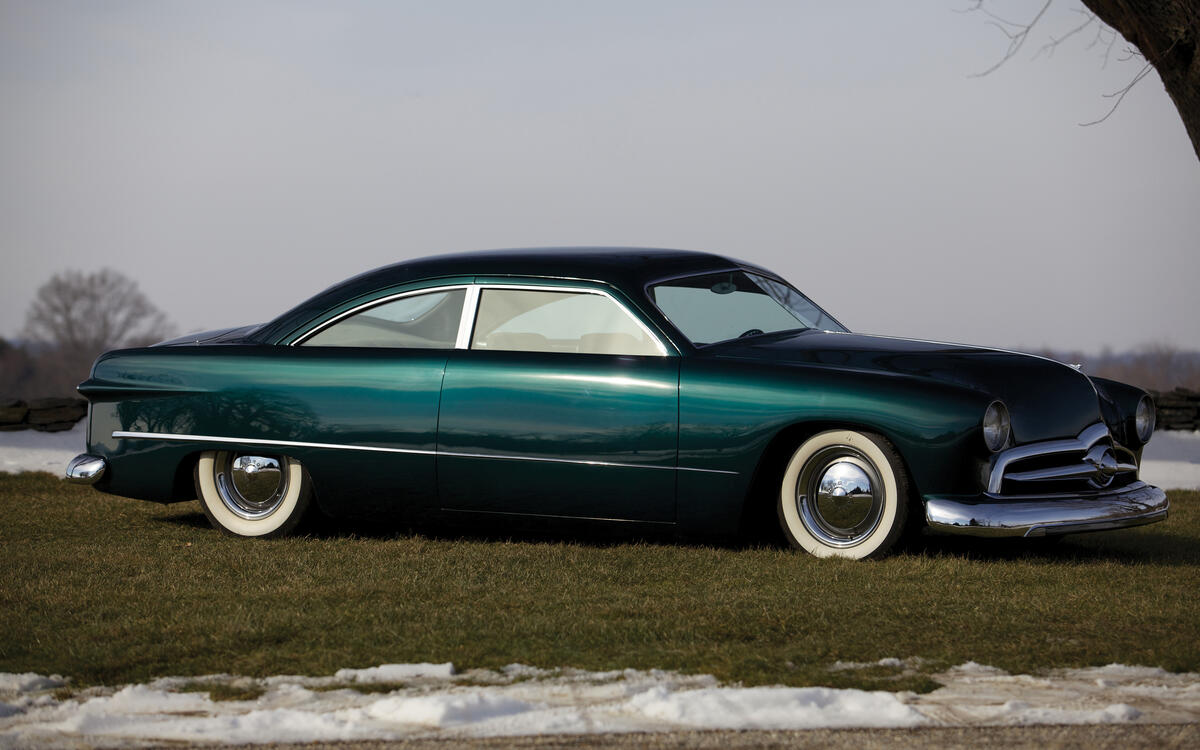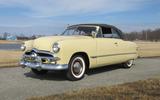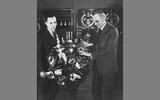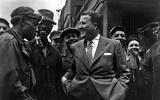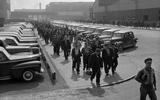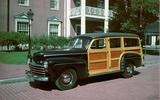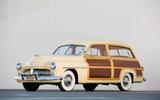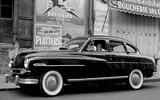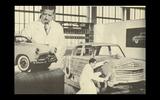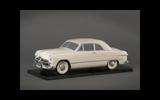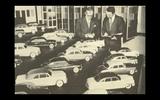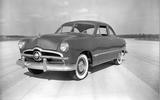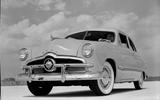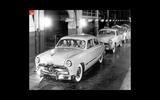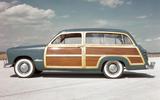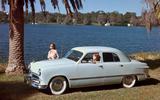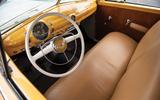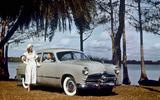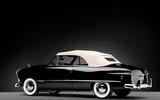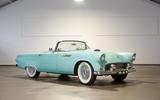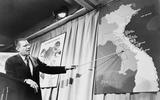 Slide of
Slide of
The next-generation Bronco due out in March 2020 is one of Ford’s most anticipated new cars.
No one outside of the company has seen the off-roader yet but it’s already a hit. Looking back, several other Ford models have enjoyed this unusually high level of success. The original Mustang introduced in 1964 stands out as one of its best-known home runs. The members of the new-for-1949 range are more obscure than the popular pony car yet they’re the superstars that saved Ford from an uncertain fate.
As we wait for the Bronco to break cover, we’re taking a look at how – and why – Ford developed its 1949 models in record time. Without them, there would likely be no Mustangs or Bronco to speak of.
 Slide of
Slide of
Sailing in choppy waters
Edsel Ford (1893-1943), Henry Ford’s (1863-1947) only son, became president of the family business in 1919, though most historians agree his father continued to make important calls behind the scenes. In the early 1940s, he worked closely with E.T. Bob Gregorie (1908-2002), the company’s first lead designer, to create a new model line scheduled to reach showrooms for the 1943 model year.
The car never saw the light that awaits at the end of a production line. Ford quickly shifted its full attention to national defence after the United States entered World War II in 1941 and Edsel Ford unexpectedly died of stomach cancer in 1943 at 49 years old. His father once again took over the company he founded but his health had started to fail, partly because he suffered from a series of strokes in the 1930s. PICTURE: Edsel and Henry Ford next to an early V8 in 1934
 Slide of
Slide of
Ford and the Whiz Kids
Henry Ford II (1917-1987; pictured), Edsel’s oldest son and Henry’s oldest grandson, became president of Ford on 21 September 1945. He was 28 and knew he lacked the experience needed to turn the family business around. He started by overhauling Ford’s executive team and notably hired several men (including Ernest Breech; 1897-1978) from General Motors.
He also recruited the Whiz Kids, a group of ten World War II veterans who were part of the Air Force’s Statistical Control operations. If they could orchestrate America’s involvement in a global conflict, they certainly knew how to keep a carmaker healthy and relevant.
 Slide of
Slide of
From war to peace
Ford, like nearly all of its American rivals, released warmed-over pre-war models when peace returned. It was too late to bring the planned 1943 models to showrooms so work began on new projects.
Executives envisioned a small, entry-level model and a bigger car positioned directly above it. The development process accelerated in 1946 and product planners aimed to release both models in time for the 1948 model year, beating arch nemesis Chevrolet to the market by a comfortable margin. It helped that the men Henry Ford II hired from General Motors shared valuable insight about the company’s future product roadmap. PICTURE: Ford’s Rouge factory in 1946
 Slide of
Slide of
What’s old is new again
In the meantime, Ford continued selling pre-war models updated with a handful of visual tweaks. Its 1946 range included the Deluxe and Super Deluxe series each available with a six- or an eight-cylinder engine and in a variety of body styles. Sales were relatively low, buyers were ravenous for anything new in the post-war era, and Ford’s finances began crumbling. PICTURE: 1946 Super Deluxe
 Slide of
Slide of
The full-size car gets axed…
Ford’s new-for-1948 range remained on track for an introduction that would have likely taken place in 1947 until Ernest Breech, one of the executives poached from General Motors, decided to delay the full-size model. He worried such a big, heavy car wouldn’t be competitive. The project had reached an advanced stage in the development process so cancelling it wasn’t an option; it was instead given to Ford’s Mercury division where it gradually morphed into the Eight released in 1949.
 Slide of
Slide of
…and the small car gets cancelled, too
The smaller car met the same fate. According to Consumer Guide, executives realized it would cost only 17% less than the bigger model they had just canned. Their options included releasing it and positioning it above its rivals, pricing it lower and selling it at a loss and delaying it to make it cheaper. They instead chose to sell the design to Ford’s French division, where it became the Vedette (pictured), and start from scratch. By this point, Ford realized nothing new would be ready in time for the 1948 model year.
 Slide of
Slide of
Ready, set, draw!
Panicked, Ford launched an internal design competition to speed up the development process. Stylists E.T. Bob Gregorie (who still ran the firm’s design department; pictured), Joe Oros, Elwood Engel, George Walker, Richard Caleal, Bob Bourke, and Bob Koto all worked on the various designs submitted. Precisely who did what – and who styled the winning car – remains a highly contentious point in 2020.
 Slide of
Slide of
Gregorie vs Walker
Stylists who wanted to participate in the contest had 90 days to submit a 1/4-scale model made of clay. Decision-makers selected Caleal’s proposal (submitted in Walker’s name) in August 1946, a surprising move that angered Gregorie. In part to appease him, Ford organized a second contest and this time requested a full-size clay model. Gregorie and Walker were the only designers invited to participate, though neither men worked alone; making a car out of clay required a tremendous amount of time.
 Slide of
Slide of
Getting it right
Here again, mass confusion ensued about who did what, and which designer deserved credit for which styling cue. What’s certain is that Walker’s proposal was again chosen over Gregorie’s on the condition that its front end receive a comprehensive redesign to make it more eye-catching. Ford’s first new car in nearly a decade needed to be a home run, the kind motorists would rush into showrooms to buy.
Gregorie resigned from his position as Ford’s chief stylist in December 1946.
 Slide of
Slide of
Testing starts
With the final design selected, if not locked in, Ford hurriedly launched the next phase of the development process. Engineers began testing the 1949 models in early 1947 by concealing the new mechanical components under existing bodies, and the first full prototypes hit the road a couple of months later. Time was running out, delaying the car until the 1950 model year was not an option, yet road testers managed to put over one million miles on the various test mules built in a little over a year.
 Slide of
Slide of
Ford’s star-studded debut
The development process required 10 million man-hours and cost Ford an estimated $72 million (about $770 million/£590 million in 2020). It culminated on 18 June 1948 when the company introduced its 1949 model range at a no-expenses-spared event held at the Waldorf-Astoria hotel in New York City. The line-up later embarked on a tour of the United States and drew crowds everywhere it stopped.
 Slide of
Slide of
Shaped like nothing else
The 1949 models were about 4in lower than their predecessors and they looked considerably more modern. Most agreed the propeller-shaped chromed grille was the car’s most distinctive design feature but the smooth, slab-sided body was revolutionary as well. The sheet metal hid an independent front suspension that improved the ride quality and a spacious, comfortable interior.
 Slide of
Slide of
Ford’s victory
Henry Ford II completely silenced the critics who complained he didn’t have the experience needed to lead Ford by successfully bringing the 1949 models to production in about 18 months. He personally drove the first example out of the Rouge factory in Dearborn, Michigan (pictured). Millions followed; Ford received over 100,000 orders for the new car on the first day it began selling it.
 Slide of
Slide of
The 1949 range
Ford’s 1949 line-up included a base trim called Standard Series and a more upmarket variant named Custom Series. Each one was offered in a variety of body styles including a two- and a four-door saloon and a six-seater coupe. Standard customers could select a three-seater business coupe with a vast storage space in lieu of the rear bench while Custom buyers had the option of ordering a convertible or an estate (pictured).
 Slide of
Slide of
Ford’s 1949 range, by the numbers
The Standard and Custom models were further divided into six- and eight-cylinder variants. Both came equipped with a 3.7-litre straight-six rated at 95bhp in their most basic configuration. Buyers who needed more could order Ford’s venerable 3.9-litre flathead V8 with 100bhp on tap. Introduced in 1932, the eight-cylinder was the only part in Ford’s 1949 range that wasn’t entirely new.
The rear wheels received power from a three-speed manual transmission regardless of how many cylinders were under the bonnet. An overdrive function was offered at an extra cost.
 Slide of
Slide of
Life aboard
The 1949’s interior was just as modern as its exterior. Most body styles offered space for six passengers on a pair of bench seats, though the business coupe came with room for three on a single row of seats and the estate could hold eight people. Ford proudly highlighted the model’s “lounge car interior, luxurious appointments and picture window visibility” in period ads.
 Slide of
Slide of
Easy on the wallet
The cheapest 1949 Ford was the business coupe. Aimed largely at professionals, it was priced at $1333 (around $14,000/£11,000) when equipped with a six-cylinder engine. At the other end of the spectrum, the V8-powered estate cost $2264 (about $24,000/£18,000 in 2020). To add context, in the United States, the average annual wage in 1949 was $3,000 (approximately $32,000/£26,000 in 2020).
 Slide of
Slide of
Reaping the rewards
Bringing the 1949 range to the market in such a short amount of time was an extremely difficult and stressful job. Many assumed it couldn’t be done but Ford pulled it off and reaped the rewards.
It built 1,118,740 cars in 1949, a significant increase over 1948’s total and about 100,000 more units than Chevrolet. Crucially, historians estimate the new 1949 range earned Ford a much-needed $177 million profit (approximately $1.9 billion/£1.4 billion in 2020) during its production run.
 Slide of
Slide of
The 1949’s legacy
It’s not far-fetched to claim the 1949 range saved Ford. Healthy sales in the early 1950s gave the company the confidence and the credibility it needed to go public in 1956, a move Henry Ford wanted to avoid at all costs. Some of the profits generated by the 1949 models and their derivatives also funded the development of new nameplates, like the original Thunderbird (pictured) released in 1955.
 Slide of
Slide of
From Michigan to Washington
Many of the men Henry Ford II hired when he became Ford’s president to work on the 1949 project quickly moved up in the carmaker’s hierarchy. Robert McNamara (1916-2009; pictured), one of the ten Whiz Kids, notably became the company’s president in 1960, a stunning accomplishment considering all of his predecessors belonged to the same family tree as founder Henry Ford. He didn’t spend long at the top; American president John F. Kennedy (1917-1963) appointed him Secretary of Defence that same year and he kept this position until 1968. He notably helped America steer through the 1962 Cuban Missile Crisis and escalated the country’s involvement in the Vietnam War.
 Slide of
Slide of
The 1949 Ford in 2020
Even 72 years after their introduction, the members of Ford’s 1949 range aren’t terrifically rare. The most difficult part is finding one that hasn’t been modified or driven into the ground. Many were transformed into hot-rods with varying degrees of skill and thousands ended up rotting away in fields or barns. Plan on spending no more than $10,000 (about £7700) for a project that runs, drives but needs work and closer to $25,000 (around £32,000) for a turn-key, never-modified car in good condition.
Some body styles are more sought-after than others; wood-sided estate models sometimes trade hands for nearly $100,000 (roughly £77,000). Also, keep in mind a vast majority of the production run stayed in America so that’s your best starting point if you’re in the market for one in any condition.
As Ford gears up to launch the new Mustang Mach-E and Bronco models, we look at another make-or-break car: the 1949 Ford, Detroit's first post-war new car
Advertisement


